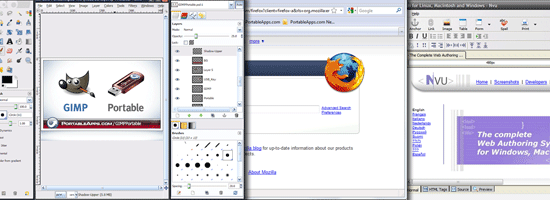
Recently I picked up an old design book that I hadn’t touched in a while, and it reminded me of a design principle that many of us put into practice probably only subconsciously, if at all.
The book deals with designing for print, but I thought it would make a great topic to discuss in the context of web design.
The
principle of proximity calls for related items to be grouped visually, creating less clutter and making for a more organized layout. Items unrelated to each other should be placed further apart, to emphasize their lack of relationship.
I’ll discuss details and some ways in which this can be implemented effectively, but this definition should suffice for what we’ll discuss in this article.
The correct use of proximity, in conjunction with other design principles, has a big impact on the
user experience and, ultimately, a website’s overall success.
Don’t Fear White Space
The first step to properly implementing the principle of proximity is understanding the importance of
white space in design.
Lack of white space is a common problem in amateur designs. Design is a means of communicating information, and when amateurs attempt to convey a message through design, their natural inclination is to spread out the content evenly to fill the space, without giving much thought to the potential of well-organized white space.
White space can affect the user’s behavior as much, if not more, than the actual content on the page. White space guides the user’s eyes in the intended direction, creates contrast and makes a lasting impression.

Even though W3Avenue’s website above contains a considerable amount of content (with articles under numerous categories, like any design blog) and a series of sidebar ads, it doesn’t overwhelm the user visually.
The generous room in the header and appropriately spaced items in the content and sidebar areas contribute to this clean and organized look. W3Avenue is not doing anything particularly unique with its content, but its design probably contributes to the strong traffic it gets in a short period of time.
So don’t be insecure about empty space in your design. Properly using white space is the first step in implementing the principle of proximity and, thus, making a design more visually appealing.

 Posted by hacking tips in
Posted by hacking tips in







 Kubrick, the default theme for WordPress since 2005, got many Web and open-source enthusiasts through some pretty tough times.
Kubrick, the default theme for WordPress since 2005, got many Web and open-source enthusiasts through some pretty tough times.






 “Coming soon” pages are a great way for websites to engage and connect with visitors, even before the actual site is published.
“Coming soon” pages are a great way for websites to engage and connect with visitors, even before the actual site is published. What makes a design look coordinated, planned and professional? The answer is: ‘color’.
What makes a design look coordinated, planned and professional? The answer is: ‘color’.
 Recently I picked up an old design book that I hadn’t touched in a while, and it reminded me of a design principle that many of us put into practice probably only subconsciously, if at all.
Recently I picked up an old design book that I hadn’t touched in a while, and it reminded me of a design principle that many of us put into practice probably only subconsciously, if at all.
 There are really only a few tricks to writing properly for the web. If you know how to write, you are already 95% of the way there.
There are really only a few tricks to writing properly for the web. If you know how to write, you are already 95% of the way there. As the first thing visitors see, home pages and headers often steal the design spotlight.
As the first thing visitors see, home pages and headers often steal the design spotlight.